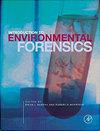利用粉尘监测系统测量环境空气细颗粒物(PM≤2.5)和粗颗粒物(PM>2.5)浓度
IF 1.2
4区 环境科学与生态学
Q4 ENVIRONMENTAL SCIENCES
引用次数: 3
摘要
摘要:在台湾台中科学园,利用菲达斯蛙采样器采集不同粒径的环境空气污染物。确定了颗粒大小与周围空气颗粒总数之间的关系。细颗粒物(PM≤2.5)和粗颗粒物(PM>2.5)浓度占总颗粒物浓度的百分比。不同粒径颗粒物(PM1、PM2.5、PM4、PM10和PMtot)的平均浓度和总颗粒物数均在2月24日达到最高值,此后至6月30日呈下降趋势。颗粒物浓度与粒径(PM1、PM2.5、PM4、PM10、PMtotal suspended particles (PMtot.))呈强相关。对于更小的颗粒,这种关系更强。使用Fidas Frog采样器获得的细颗粒物浓度(PM≤2.5)约为先前在同一采样点研究中获得的浓度的67.7%。使用Fidas Frog采样器获得的粗颗粒浓度(PM bbbb2.5)约为(先前在同一采样点进行的研究或仅是该研究)中获得的浓度的89.4% (Fang et al., 2019)。最后,使用Fidas Frog采样器在台中科学园获得的粗颗粒平均浓度约为细颗粒浓度的3.1倍。台中科学园场地颗粒污染物的主要来源是磨损过程、地壳物质和车辆磨损产物。本文章由计算机程序翻译,如有差异,请以英文原文为准。
Measurements of ambient air fine (PM≤2.5) and coarse (PM>2.5) particulates concentrations by using of a dust monitoring system
Abstract A Fidas Frog sampler is used to collect ambient air pollutants with various particle sizes at the Taichung Science Park in Taichung, Taiwan. The relationship between particle size and total number of ambient air particles is determined. Fine (PM≤2.5) and coarse (PM>2.5) particulate concentrations are obtained as percentages of the total particulate concentration. The mean concentrations of particles of various sizes (PM1, PM2.5, PM4, PM10, and PMtot) and the total number of particles were all highest on February 24, and declined from then until June 30. The particle concentration was strongly correlated with particle size (PM1, PM2.5, PM4, PM10, PMtotal suspended particles (PMtot.)). The relationship was stronger for smaller particles. The fine particulate concentrations (PM≤2.5) that were obtained using the Fidas Frog sampler were around 67.7% of those obtained in a previous study at the same sampling site. The coarse particulate concentrations (PM>2.5) that were obtained using the Fidas Frog sampler were about 89.4% of those obtained in (a previous study at the same sampling site OR JUST that study) (Fang et al., 2019). Finally, the average coarse particle concentrations that were obtained using the Fidas Frog sampler at this Taichung Science Park site were about 3.1 times the thus obtained fine particles concentrations. The main sources of particulate pollutants at the Taichung Science Park site were abrasion processes, crustal materials and products of vehicle wear.
求助全文
通过发布文献求助,成功后即可免费获取论文全文。
去求助
来源期刊

Environmental Forensics
环境科学-环境科学
CiteScore
4.90
自引率
5.60%
发文量
23
审稿时长
3 months
期刊介绍:
Environmental Forensics provides a forum for scientific investigations that address environment contamination, its sources, and the historical reconstruction of its release into the environment. The context for investigations that form the published papers in the journal are often subjects to regulatory or legal proceedings, public scrutiny, and debate. In all contexts, rigorous scientific underpinnings guide the subject investigations.
Specifically, the journal is an international, quarterly, peer-reviewed publication offering scientific studies that explore or are relevant to the source, age, fate, transport, as well as human health and ecological effects of environmental contamination. Journal subject matter encompasses all aspects of contamination mentioned above within the environmental media of air, water, soil, sediments and biota. Data evaluation and analysis approaches are highlighted as well including multivariate statistical methods. Journal focus is on scientific and technical information, data, and critical analysis in the following areas:
-Contaminant Fingerprinting for source identification and/or age-dating, including (but not limited to) chemical, isotopic, chiral, mineralogical/microscopy techniques, DNA and tree-ring fingerprinting
-Specific Evaluative Techniques for source identification and/or age-dating including (but not limited to) historical document and aerial photography review, signature chemicals, atmospheric tracers and markets forensics, background concentration evaluations.
-Statistical Evaluation, Contaminant Modeling and Data Visualization
-Vapor Intrusion including delineating the source and background values of indoor air contamination
-Integrated Case Studies, employing environmental fate techniques
-Legal Considerations, including strategic considerations for environmental fate in litigation and arbitration, and regulatory statutes and actions
 求助内容:
求助内容: 应助结果提醒方式:
应助结果提醒方式:


